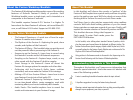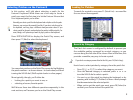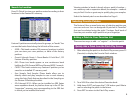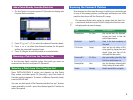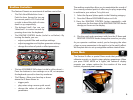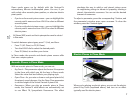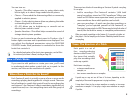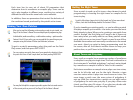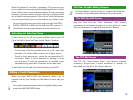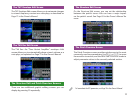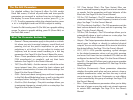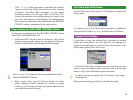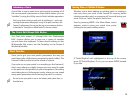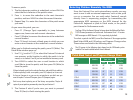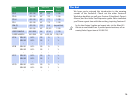
9
Each tone has its own set of about 90 parameters that
determine how its waveforms or samples play. Tones can be
set to play together in different ways, resulting in a variety of
different sounds from the same basic sonic materials.
In addition, there are parameters that control the behavior of
the combined sound produced by the patch’s active tones.
Making Your Own Patches
After you’ve read the following sections and are ready to get started, see
Page 56 in the Owner’s Manual for some helpful patch-programming tips.
In this booklet, we discuss editing—and therefore creating—patches on the
Fantom-X itself. If you prefer, you can accomplish the same thing on your
computer using the Fantom-X Editor (and Librarian) software.
To get to a patch’s parameters, select the patch on the Patch
Play screen, and then press PATCH EDIT.
You can create a new patch from one of your samples by selecting it from
the patch list’s User or Card Sample bank, and then pressing PATCH EDIT.
You may find it helpful to compare your edits against the last-saved version
of the current patch as you work. See Page 60 in the Owner’s Manual.
Getting the Right Tones
Since a patch is made up of its tones, a key element in patch
programming is choosing the right waves or samples for its
tones to play.
A patch’s effect plays a large role in its final sound, too. To learn more about
effects, check out the Workshop booklet The Fantom-X Effects.
If you’re tweaking an existing patch—or you’re editing a patch
that plays samples you’ve made—the tones you want are most
likely already in place. When you’re creating a new patch from
scratch, though, the first thing you’ll want to do is figure out
how many tones you really want to use. Many patches sound
great with just one or two tones. There’s no need to use all four
available tones unless each one really contributes to the sound
you want—there’s no point in doing programming work for
no reason, after all. And there’s another reason to keep your
patches lean, as you’ll learn in the following section.
About Tones and Polyphony
Every synth or sampler has a maximum number of waveforms
or samples it can play at a single time. This limit is referred to as
the instrument’s “available polyphony,” and each note played
by a waveform or sample is called a “voice” in this context.
Each stereo waveform or sample a tone plays uses two voices,
one for its left side, and one for the right. Likewise, a tone
uses two voices when it plays two mono waves or tones. The
more tones a patch uses, the more voices of polyphony it
eats up. With four tones active, a patch can use eight voices
of polyphony for each note you play. If you play a three-note
chord, you’d be using 24 voices—if you play two chords with
the sustain pedal down, you’d be using 48 voices!




